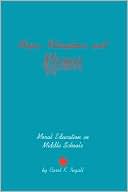Category Books
- Fiction Books & Literature
- Graphic Novels
- Horror
- Mystery & Crime
- Poetry
- Romance Books
- Science Fiction & Fantasy
- Thrillers
- Westerns
- Ages 0-2
- Ages 3-5
- Ages 6-8
- Ages 9-12
- Teens
- Children's Books
- African Americans
- Antiques & Collectibles
- Art, Architecture & Photography
- Bibles & Bible Studies
- Biography
- Business Books
- Christianity
- Computer Books & Technology Books
- Cookbooks, Food & Wine
- Crafts & Hobbies Books
- Education & Teaching
- Engineering
- Entertainment
- Foreign Languages
- Game Books
- Gay & Lesbian
- Health Books, Diet & Fitness Books
- History
- Home & Garden
- Humor Books
- Judaism & Judaica
- Law
- Medical Books
- New Age & Spirituality
- Nonfiction
- Parenting & Family
- Pets
- Philosophy
- Political Books & Current Events Books
- Psychology & Psychotherapy
- Reference
- Religion Books
- Science & Nature
- Self Improvement
- Sex & Relationships
- Social Sciences
- Sports & Adventure
- Study Guides & Test Prep
- Travel
- True Crime
- Weddings
- Women's Studies
Maps, Metaphors, and Mirrors: Moral Education in Middle School »

Authors: Carol K. Ingall
ISBN-13: 9781567503029, ISBN-10: 1567503020
Format: Paperback
Publisher: ABC-Clio, LLC
Date Published: July 1997
Edition: (Non-applicable)
Author Biography: Carol K. Ingall
Book Synopsis
REVIEW: . . . Students of educational theory and practice will enjoy-and learn from-this brief but enlightening and readable book. Recommended for upper-division undergraduates, graduate students, faculty, and practitioners. . . - September 98 CHOICE The four teachers in this study teach diverse subjects in a variety of settings. Although definitions of moral education are shaped by their backgrounds, their institutions, their perceptions of their students' needs, and their disciplines, all of the teachers consider moral education to be central to their work. For all four, the moral prototype serves as an appeal to the students' imagination, an opportunity to build connectedness and, most important, an invitation to young people to transcend themselves.
Table of Contents
Shaping Moral Behavior. Parameters and Limitations
Of Moral Education and Middle Schools
Recent Trends in Moral Education. Heroes and Role Models: Their Place in Moral Education
The Role of the Teacher in Moral Education
The Place of Literature and Narrative Theory in Moral Education
The Research and the Researcher. Personal Background and Theoretical Approach
Research Design
The Sites and Gaining Access to Them
The Godol: Hero and Role Model, Tuvial Kaplan, Springfield Torah Institute
"Heroes and Role Models of Their Kind", George Stratas, Franklin Pierce Middle School
Competent Women, Not "Good Little Girls", Amy Medeiros, Shaw School
"Quiet Heroes" John MacDonald, Roger Wolcott Smith School
A Cross-Classroom Analysis of the Students
Immersion in Popular Culture
The Students' Moral Prototypes
Conclusions and Implications
Subjects
 Educational Levels & Settings
Educational Levels & Settings  Middle School Education
Middle School EducationEducation & Teaching
 Middle School Education
Middle School Education  Middle schools
Middle schoolsNonfiction
 Philosophy
Philosophy  Major Branches of Philosophical Study
Major Branches of Philosophical Study
